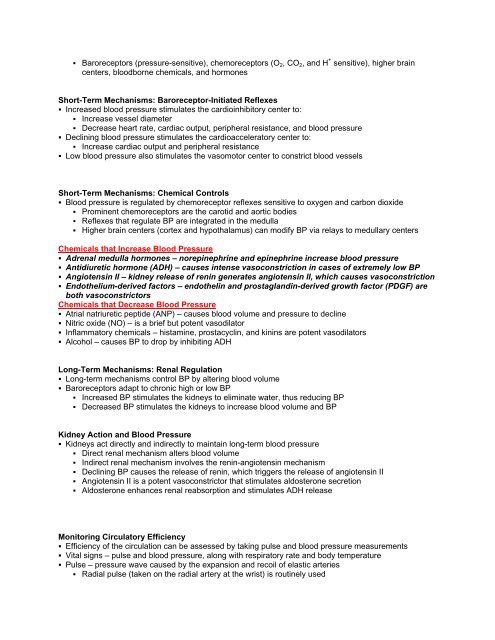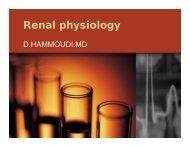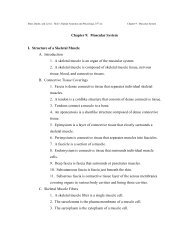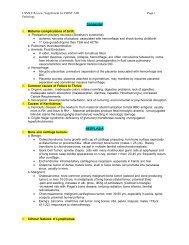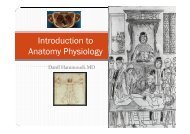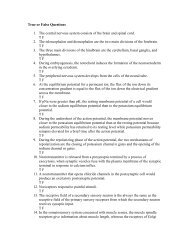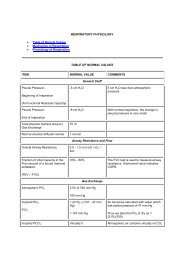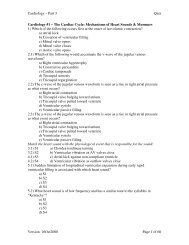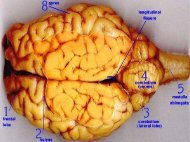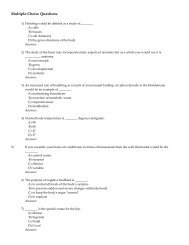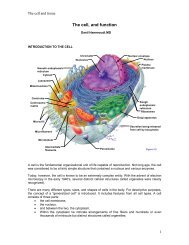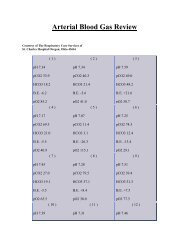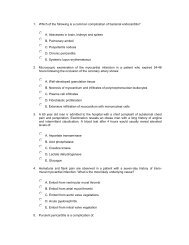Blood Vessels - Sinoe medical homepage.
Blood Vessels - Sinoe medical homepage.
Blood Vessels - Sinoe medical homepage.
You also want an ePaper? Increase the reach of your titles
YUMPU automatically turns print PDFs into web optimized ePapers that Google loves.
• Baroreceptors (pressure-sensitive), chemoreceptors (O 2 , CO 2 , and H + sensitive), higher braincenters, bloodborne chemicals, and hormonesShort-Term Mechanisms: Baroreceptor-Initiated Reflexes• Increased blood pressure stimulates the cardioinhibitory center to:• Increase vessel diameter• Decrease heart rate, cardiac output, peripheral resistance, and blood pressure• Declining blood pressure stimulates the cardioacceleratory center to:• Increase cardiac output and peripheral resistance• Low blood pressure also stimulates the vasomotor center to constrict blood vesselsShort-Term Mechanisms: Chemical Controls• <strong>Blood</strong> pressure is regulated by chemoreceptor reflexes sensitive to oxygen and carbon dioxide• Prominent chemoreceptors are the carotid and aortic bodies• Reflexes that regulate BP are integrated in the medulla• Higher brain centers (cortex and hypothalamus) can modify BP via relays to medullary centersChemicals that Increase <strong>Blood</strong> Pressure• Adrenal medulla hormones – norepinephrine and epinephrine increase blood pressure• Antidiuretic hormone (ADH) – causes intense vasoconstriction in cases of extremely low BP• Angiotensin II – kidney release of renin generates angiotensin II, which causes vasoconstriction• Endothelium-derived factors – endothelin and prostaglandin-derived growth factor (PDGF) areboth vasoconstrictorsChemicals that Decrease <strong>Blood</strong> Pressure• Atrial natriuretic peptide (ANP) – causes blood volume and pressure to decline• Nitric oxide (NO) – is a brief but potent vasodilator• Inflammatory chemicals – histamine, prostacyclin, and kinins are potent vasodilators• Alcohol – causes BP to drop by inhibiting ADHLong-Term Mechanisms: Renal Regulation• Long-term mechanisms control BP by altering blood volume• Baroreceptors adapt to chronic high or low BP• Increased BP stimulates the kidneys to eliminate water, thus reducing BP• Decreased BP stimulates the kidneys to increase blood volume and BPKidney Action and <strong>Blood</strong> Pressure• Kidneys act directly and indirectly to maintain long-term blood pressure• Direct renal mechanism alters blood volume• Indirect renal mechanism involves the renin-angiotensin mechanism• Declining BP causes the release of renin, which triggers the release of angiotensin II• Angiotensin II is a potent vasoconstrictor that stimulates aldosterone secretion• Aldosterone enhances renal reabsorption and stimulates ADH releaseMonitoring Circulatory Efficiency• Efficiency of the circulation can be assessed by taking pulse and blood pressure measurements• Vital signs – pulse and blood pressure, along with respiratory rate and body temperature• Pulse – pressure wave caused by the expansion and recoil of elastic arteries• Radial pulse (taken on the radial artery at the wrist) is routinely used


